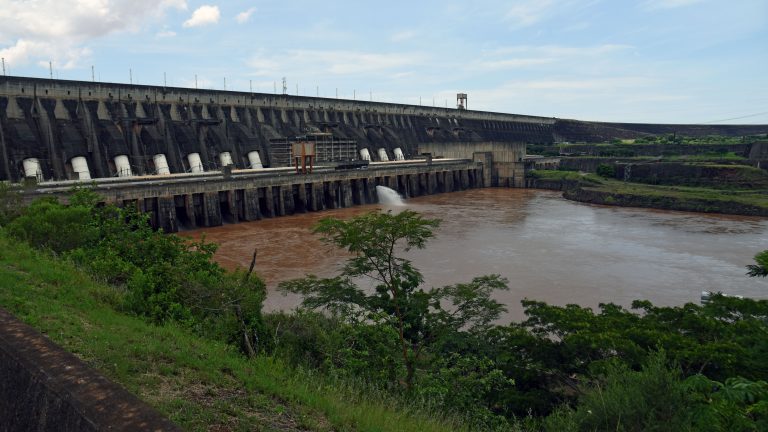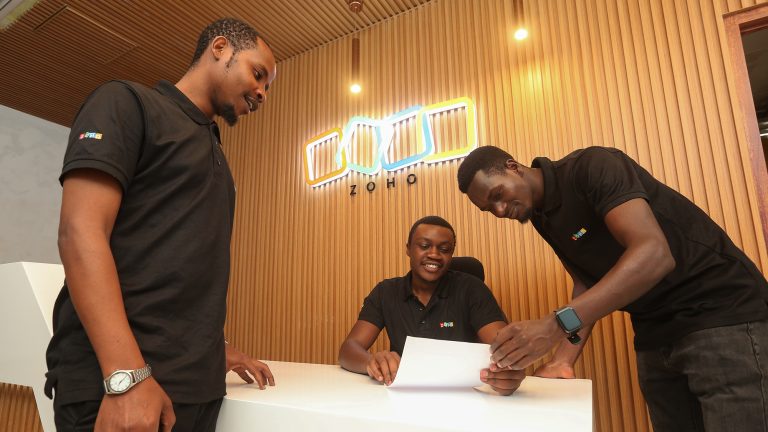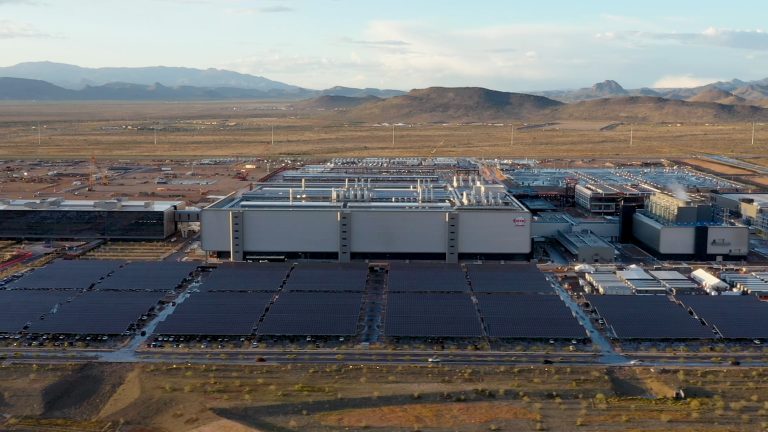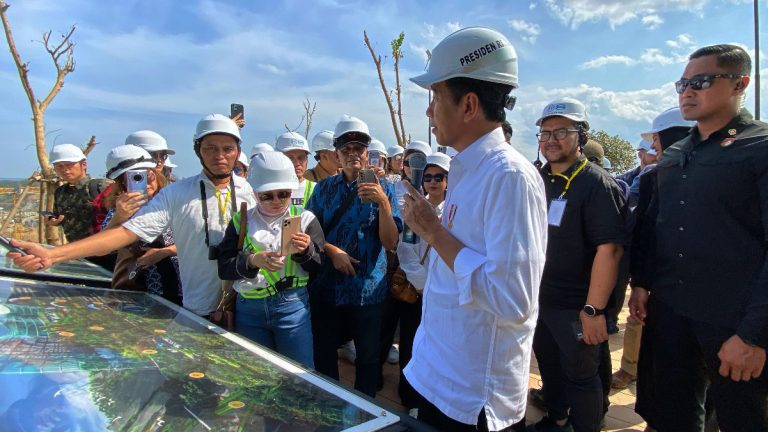After the Covid-19 pandemic reached Paraguay in 2020, Christian Kaatz was working 12-hour days to keep his company, a local internet service provider (ISP), afloat. Looking for something to help him de-stress, he bought a high-powered PC with an advanced graphics card to play games.
Then, in January 2021, “mining fever,” as he called it, started to grip his hometown of Villarrica. After a friend suggested that his Ryzen 7 processor could be put to more lucrative use, Kaatz did some sums.
“That was the last day I played video games,” he told Rest of World.
A sleepy city of about 55,000 in Paraguay’s southern hills, Villarrica’s cobbled streets — today traversed by Hilux pickup trucks as well as horse carts — are home to a crop of new small-time miners. People with a computer or two at home mine cryptocurrency as a side hustle. Kaatz is in touch with 17 other local enthusiasts via a WhatsApp group, but he guesses that the true number of those mining Bitcoin at home in Villarrica is at least four times greater.
Villarrica’s localized tech boom happened largely thanks to a legal technicality. The town is almost unique in Paraguay in having its own private energy company, CLYFSA, which dates back to 1953. (Other local electricity providers once existed but were nationalized in 1948 to form ANDE, the state electricity firm.)
When ANDE increased energy prices across the country, CLYFSA successfully argued in a local court that this contravened its existing contract with the state utility. As a result, CLYFSA still buys electricity from ANDE at an old rate, enabling it to offer a “special tariff,” from $16 per megawatt-hour, to local miners. For most industrial clients, rates rose by as much as 20% or more in 2017.
Miners are permitted to use CLYFSA’s spare energy only during troughs in demand — typically early in the morning, at night, and over the afternoon siesta — explained Nelson Cristaldo, an advisor to CLYFSA who mines Bitcoin locally.
“It might be the cheapest energy in the Americas,” said Cristaldo.
A few months after the local mining cottage-industry took off in late 2020, industrial crypto operations also sprung up. One belongs to local politician and businessman Emmanuel Friedmann. Located in an old cotton-processing factory, the warehouse-turned-Bitcoin-mine is bisected by a tangle of wiring flecked with green, red, and blue LEDS, resembling a thicket of Christmas trees.
These are 3,600 high-performance, deconstructed computer circuits known as ASICs, which resolve blockchain-based algorithms to generate cryptocurrency. Cristaldo reckons there are approximately 30,000 ASICs and counting in Villarrica — about two for every household.
Elsewhere in the town, in November 2021, workers built a hangar for another 3,000 mining rigs for Bitfarms, a Canada-headquartered firm. Sharing the same lot was a row of shipping containers, housing 3,650 such computers belonging to Penguin Academy, a startup that plans to put 20% of its mining profits toward an existing program of coding bootcamps for low-income Paraguayans.
“I want to help Paraguay leapfrog industrialization and go straight to a high-tech future,” said Penguin Academy CEO Björn Schmidtke, a German software developer living in the country’s capital, Asunción.
“There’s an extraordinary surplus, which Brazil is buying at a laughable price.”
Guaranteeing the country’s low and stable energy prices is Itaipú, a colossal dam Paraguay built in partnership with Brazil in the 1970s. Itaipú yielded a record annual production of 103.09 million megawatt-hours of electricity in 2016, which was enough to power all of Paraguay for seven years or to keep the lights on across all of Latin America for more than a month.
In recent years, Itaipú and the Three Gorges Dam in China, which generated 111.8 million megawatt-hours in 2020, have closely competed for the title of the world’s most powerful hydroelectric facility.
According to the 1973 Itaipú Treaty, the dam’s capacity is to be shared equally between Paraguay and Brazil. In practice, Paraguay’s old power lines, scarce industry, and small population of approximately 7 million people means it cannot make the most of this huge source of cheap, renewable energy. It sells its spare power to Brazil, which uses 85% of the dam’s output allocated to Paraguay, at low prices.
As a result, many Paraguayans fume that their energy has been sold at cents on the dollar to Brazil.
“There’s an extraordinary surplus, which Brazil is buying at a laughable price,” said Gregorio Bareiro, who owns over 1,000 ASICs in Ciudad del Este, a border city near Itaipú.
Brazil has justified the terms by pointing out that it secured the $27 billion in loans used to pay for the dam’s construction. But in 2023, this debt will be paid off, meaning energy prices in Paraguay could fall dramatically. Whether this happens is tied up with the renegotiation of key parts of the 1973 deal, which also lapses in 2023.

Along with seven other cryptocurrency miners from across Paraguay, Bareiro is seeking to form a gremio (union) to lobby the government to secure cheaper power in its talks with Brazil and to free up this electricity for mining.
“The [union’s] main objective is to gain enough force to influence the energy negotiations,” he said. “If people don’t stand up and generate pressure, this will all be cooked up again for the benefit of the Brazilians.”
Bitcoin mining, said Bareiro, can be an unlikely “ace up the sleeve” for Paraguay’s negotiators. “Brazil always puts forward the excuse of asking why Paraguay wants the energy if it can’t even use it,” he said. The union will argue that by funneling Paraguay’s share of hydropower into the crypto industry, the country could generate jobs, tax revenue, and foreign investment.
The outcome of the negotiations is “extremely uncertain,” said Julieta Heduvan, a specialist in Paraguay’s foreign policy. But she predicts Brazil will adopt its usual “strong and overwhelming” position, making it unlikely that the smaller country will walk away with everything it wants.
Members of Bareiro’s embryonic crypto guild represent only about 3,000 ASICs. More than 50,000 mining crypto exist in Ciudad del Este alone, he estimated. “Generally it’s people we already know,” he said. But others are waiting to join, he added, provided Paraguay’s authorities regulate Bitcoin and its mining.
“That’s the fear. That’s why people don’t want to openly say they’re miners.”
At the moment, Bareiro said, the group was being handled “with a lot of discretion” between a handful of close associates, few of whom wanted their names to become public for fear of having their bank accounts shuttered by financial institutions wary of falling foul of the law. “That’s the fear. That’s why people don’t want to openly say they’re miners,” Bareiro explained.
There are some signs crypto regulation might be on the horizon. In June, lower-house deputy Carlos Rejala — a member of the minor opposition party Hagamos — unveiled a bill to regulate cryptocurrency mining and trading in Paraguay, delighting crypto enthusiasts worldwide.
In November 2021, Rejala asked Cristaldo to redraft the law to increase incentives for would-be crypto investors, and, in December, Paraguay’s senate approved the legislation, despite objections raised by institutions, including the Central Bank, sending it to the lower house for ratification.
“I think it’s going to pass because we have the votes,” said Friedmann, the Villarrica crypto mogul. “But if the worst happens, it just goes back to the senate, and they ratify it with the same votes, and it goes to the executive to be signed.”
However, Cristaldo is not involved with the pressure group of crypto miners and does not share their aim of influencing Paraguay’s official stance on Itaipú: “I’m very critical of the government,” he said.
Bareiro said that his fledgling crypto lobby had not yet worked directly with Rejala — although it welcomed his efforts to push for regulation — because the congressman’s growing public profile, including designs to run for president in 2023, could bring “negative” unwanted attention from banks and lead to their accounts being closed.
There are also strong voices critical of crypto mining, who are likely to resist any further efforts by Bitcoin miners to muscle in on the political stage and even less likely to let them influence a once-in-a-generation negotiation with Brazil over Itaipú that will affect Paraguay’s future for decades to come.
Bitcoin mining “doesn’t contribute to the industrial development of our country,” said Mercedes Canese, a former head of Paraguay’s Viceministry of Mines and Energy. To her, the discounted rate at which Villarrica’s CLYFSA buys energy from ANDE, the state electricity utility, means everyday Paraguayans are unfairly “subsidizing” the company, and by extension local miners — in 2018, that “subsidy” was worth more than $2 million.
The miners “basically don’t add value,” Canese added, pointing to population growth estimates that suggest Paraguay’s energy surplus will run out in around 15 years. Drought linked to climate change is already sapping Itaipú’s output.



